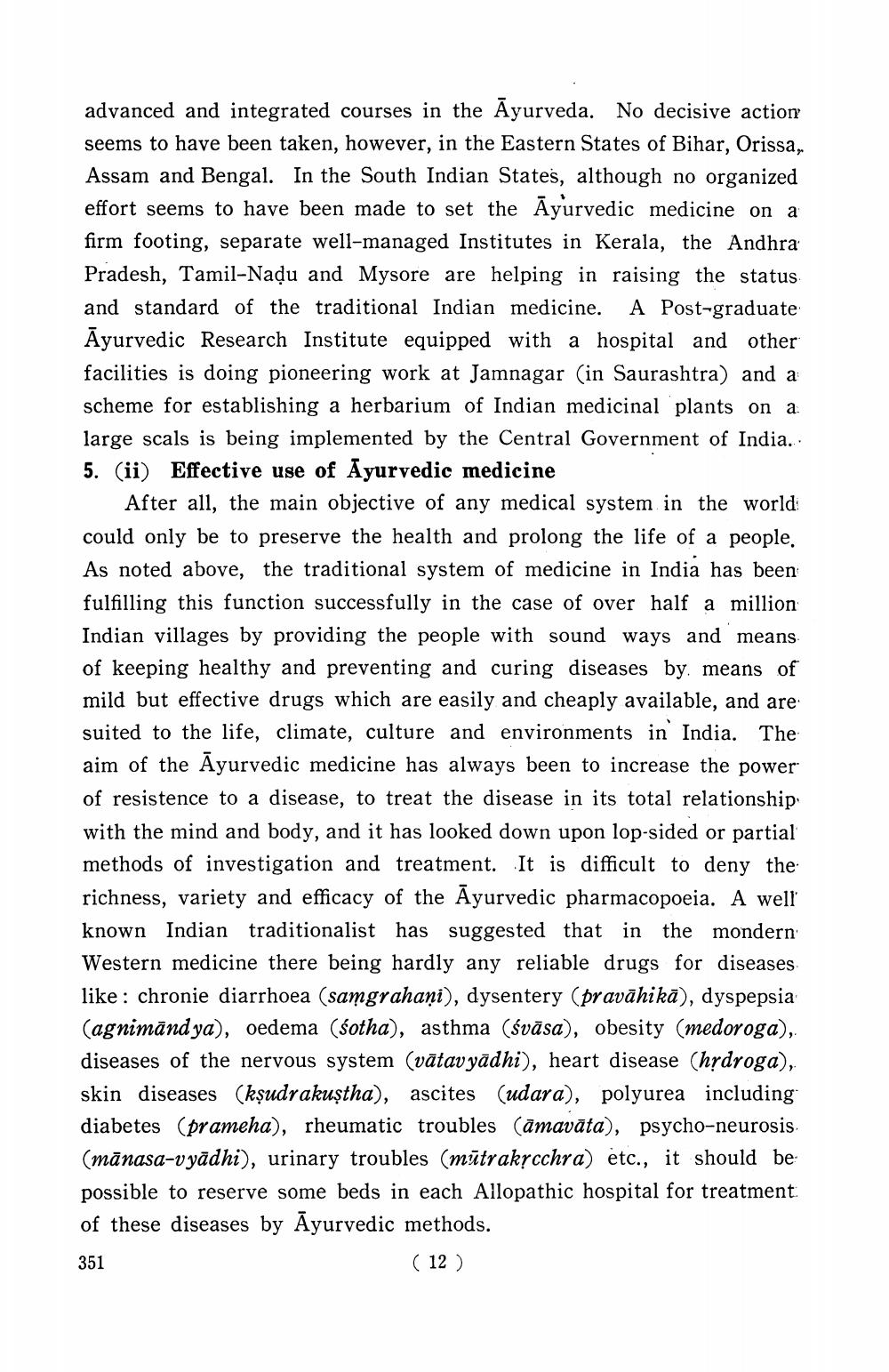________________
advanced and integrated courses in the Āyurveda. No decisive action seems to have been taken, however, in the Eastern States of Bihar, Orissa, Assam and Bengal. In the South Indian States, although no organized effort seems to have been made to set the Ayurvedic medicine on a firm footing, separate well-managed Institutes in Kerala, the Andhra Pradesh, Tamil-Nadu and Mysore are helping in raising the status and standard of the traditional Indian medicine. A Post-graduate Āyurvedic Research Institute equipped with a hospital and other facilities is doing pioneering work at Jamnagar (in Saurashtra) and a scheme for establishing a herbarium of Indian medicinal plants on a large scals is being implemented by the Central Government of India. 5. (ii) Effective use of Ayurvedic medicine
After all, the main objective of any medical system in the world could only be to preserve the health and prolong the life of a people. As noted above, the traditional system of medicine in India has been fulfilling this function successfully in the case of over half a million Indian villages by providing the people with sound ways and means.
keeping healthy and preventing and curing diseases by means of mild but effective drugs which are easily and cheaply available, and are suited to the life, climate, culture and environments in India. The aim of the Ayurvedic medicine has always been to increase the power of resistence to a disease, to treat the disease in its total relationship with the mind and body, and it has looked down upon lop-sided or partial methods of investigation and treatment. It is difficult to deny the richness, variety and efficacy of the Ayurvedic pharmacopoeia. A well' known Indian traditionalist has suggested that in the mondern Western medicine there being hardly any reliable drugs for diseases like: chronie diarrhoea (samgrahaņi), dysentery (pravāhikā), dyspepsia (agnimānd ya), oedema (sotha), asthma (śvāsa), obesity (medoroga), diseases of the nervous system (vātavyādhi), heart disease (hydroga), skin diseases (kșudrakuştha), ascites (udara), polyurea including diabetes (prameha), rheumatic troubles (āmavāta), psycho-neurosis. (mānasa-vyādhi), urinary troubles (mūtrakịcchra) etc., it should be possible to reserve some beds in each Allopathic hospital for treatment of these diseases by Ayurvedic methods. 351
( 12 )




